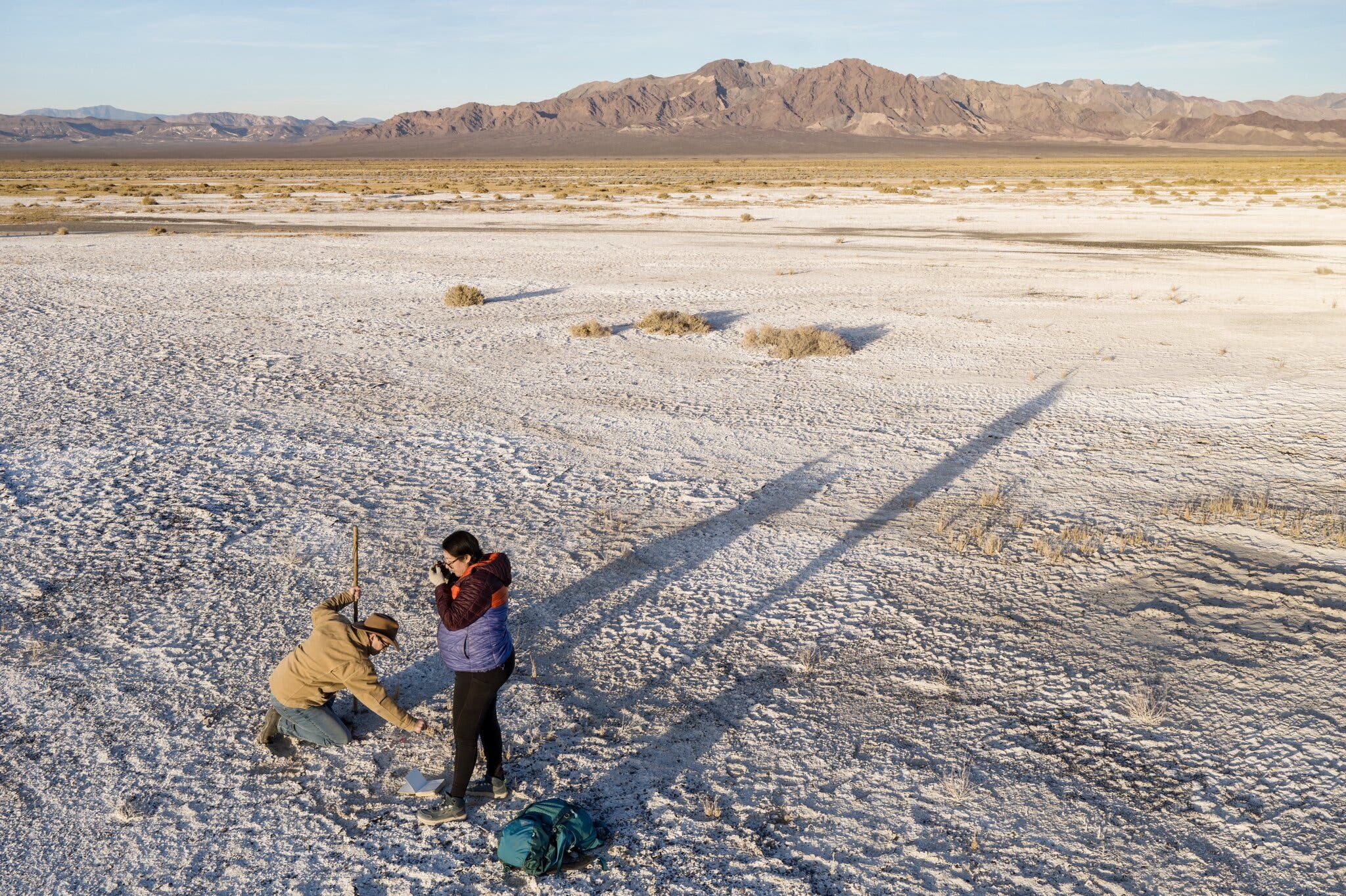Our little corner of the world was covered in the New York Times Magazine recently. The article “Nevada’s Lithium Could Help Save the Earth. But What Happens to Nevada?” was published on January 24, 2025 and written by Meg Bernhard, a writer based in Las Vegas (who also wrote this profile of Wonderhussy). The sub-headline reads: “Many climate experts see its deserts as a place to build the green-energy future. For two local activists, the price is too great.”
The piece explores the conflict between lithium mining and conservation in Nevada’s desert. While lithium is a crucial resource for the green-energy transition, local activists Patrick Donnelly and Naomi Fraga argue that mining threatens fragile ecosystems like Ash Meadows. They emphasize the biodiversity of the desert, often overlooked, and highlight the environmental risks posed by lithium extraction methods, including excessive water usage, habitat destruction, and potential toxic contamination. One lithium-mining method siphons billions of gallons of water for evaporation, while another blasts rock to create open pits and uses sulfuric acid to leach lithium from clay, potentially misting the environment with toxins.
The article follows Fraga and Donnelly’s journey from scientific research to activism, detailing their efforts to protect rare desert plant species and the emotional toll of their work. Fraga, a scientist at heart, was trained to avoid emotional investment in plants, but studying rare species that grew in extreme places made her see them as vulnerable and in need of defense. Donnelly, who took a different path, developed a deep-ecology perspective, prioritizing biodiversity over human interests. Their work together evolved into a personal and professional partnership, culminating in an engagement in 2024.
Fraga and Donnelly defend the desert in particular because it’s a place that people imagine to be barren. In truth, the desert teems with life, which Tecopans know well. Come springtime, wildflowers carpet the desert floor; snails, fish, and toads dwell in turquoise pools and springs; blue-hued sage and pinprick monkeyflowers grow from ancient living crust. Lithium mining, they warn, could do irreversible harm to these plants and animals, whose dependence on scarce water makes them particularly vulnerable to environmental change.
Nevada, like the rest of the desert Southwest, is also prime for solar development. In December, the Bureau of Land Management finalized its long-anticipated Western Solar Plan, which would make available nearly 12 million acres of Nevada to solar, including by one estimate 220,000 acres in the Amargosa Basin. Fraga and Donnelly, along with a host of environmental groups, are worried about dust, water usage, and habitat destruction. In theory, they want this kind of land-use plan, but the couple is concerned that sensitive places like Ash Meadows would still suffer.
Green-energy advocates counter that sacrifices must be made to combat climate change, asserting that U.S.-controlled lithium production offers better environmental oversight and national security benefits. “The science tells us that we have to cut greenhouse-gas emissions for human activities to net zero as rapidly as we can,” says Jesse Jenkins, an assistant professor of mechanical and aerospace engineering at Princeton University. To meet the urgent infrastructure needs of the green-energy transition, some species or ecosystems might become secondary concerns, says Seaver Wang, who researches renewable energy at the nonprofit Breakthrough Institute. “There’s no such thing as impact-free mining,” he says. “There’s no such thing as energy without impacts, either.”
As lithium prices fluctuate and political leadership shifts, the future of Nevada’s lithium mining remains uncertain. By June 2024, a lawsuit Donnelly had helped file delayed Rover’s exploratory drilling in Ash Meadows, and opposition to the project united an unusual coalition of small-town conservatives, Las Vegas environmentalists, and Native tribes. Locals feared the mine would poison the Amargosa River and deplete already limited water resources.
In January 2025, the Biden administration granted a temporary two-year ban on mining near Ash Meadows, but the long-term outcome remains unclear. The next administration would need to approve a full 20-year ban, which seems unlikely given Trump’s pro-mining stance. The mineral withdrawal process will include a National Environmental Policy Act (NEPA) review, with opportunities for public input and stakeholder engagement. However, in just the first weeks of the new Trump administration, according to VOX, the new old president has already issued sweeping orders on environmental policy, some of which will impact NEPA.
The debate over lithium mining in Nevada is likely to continue as the demand for renewable energy infrastructure grows. While the recent two-year mining ban near Ash Meadows provides temporary relief for conservationists, the long-term outlook depends on political decisions, economic factors, and evolving environmental policies. Future efforts to balance green-energy development with ecosystem preservation may require new regulatory frameworks, improved mining technologies, or alternative sources of lithium. As Fraga and Donnelly remain engaged in conservation work, the broader challenge will be finding sustainable solutions that address both the urgent need for clean energy and the protection of fragile landscapes.


Leave a Reply